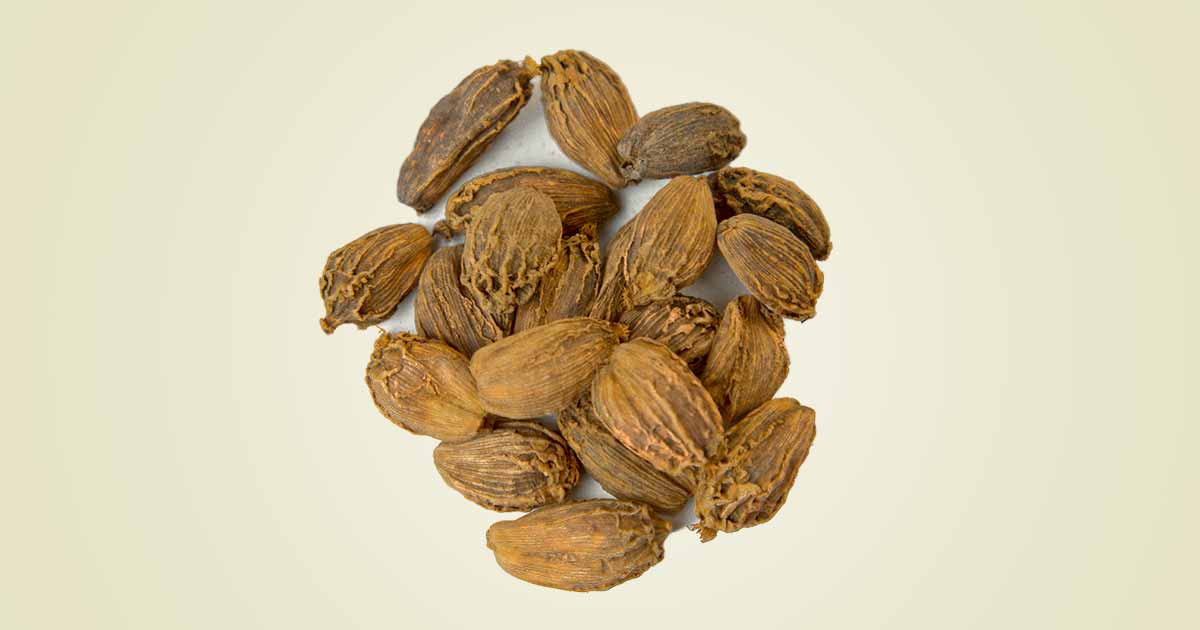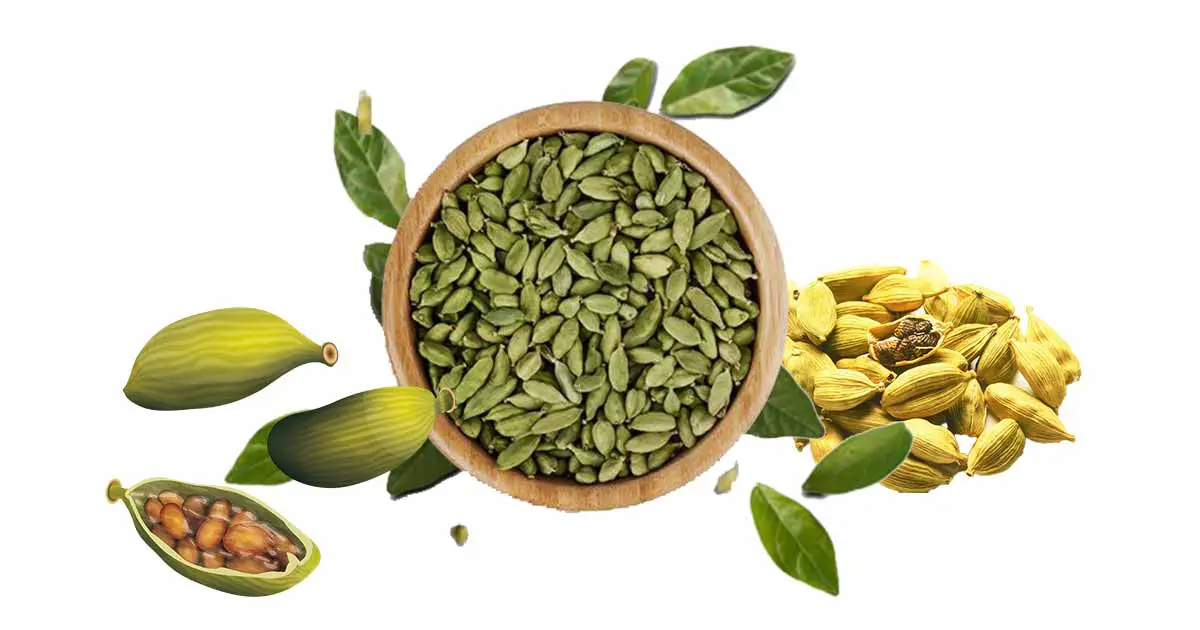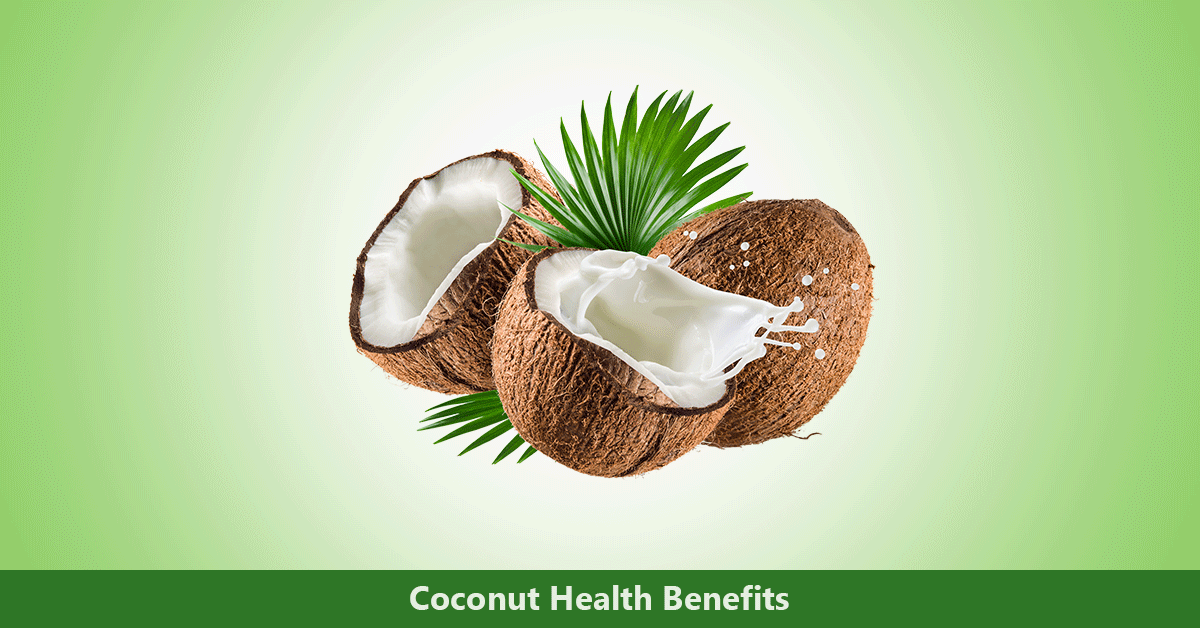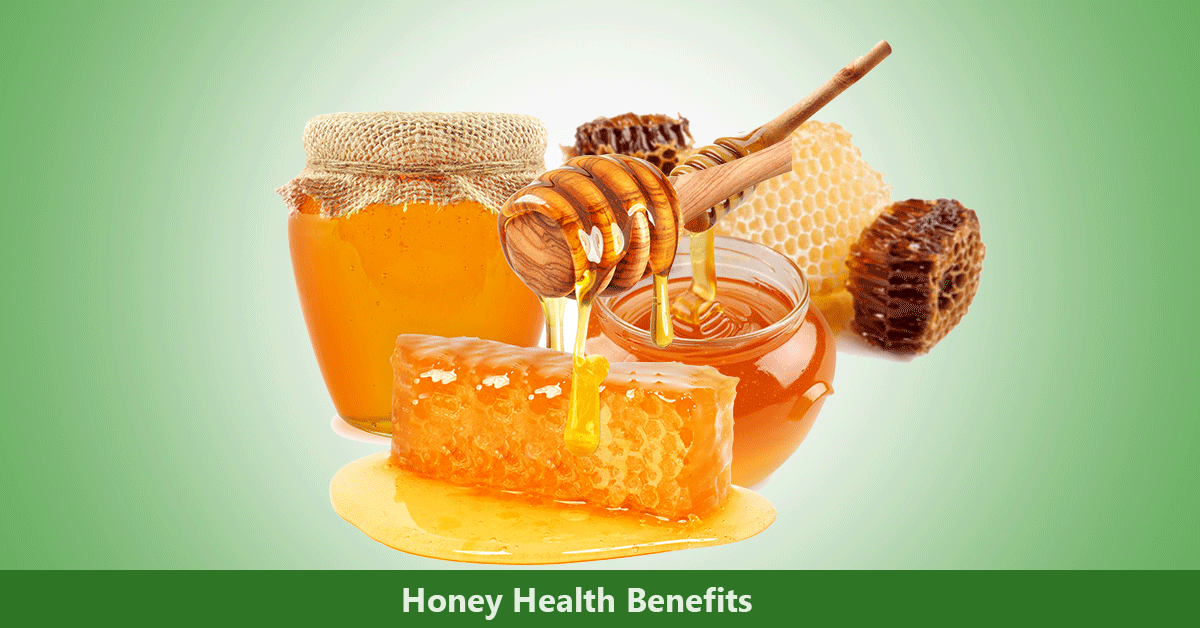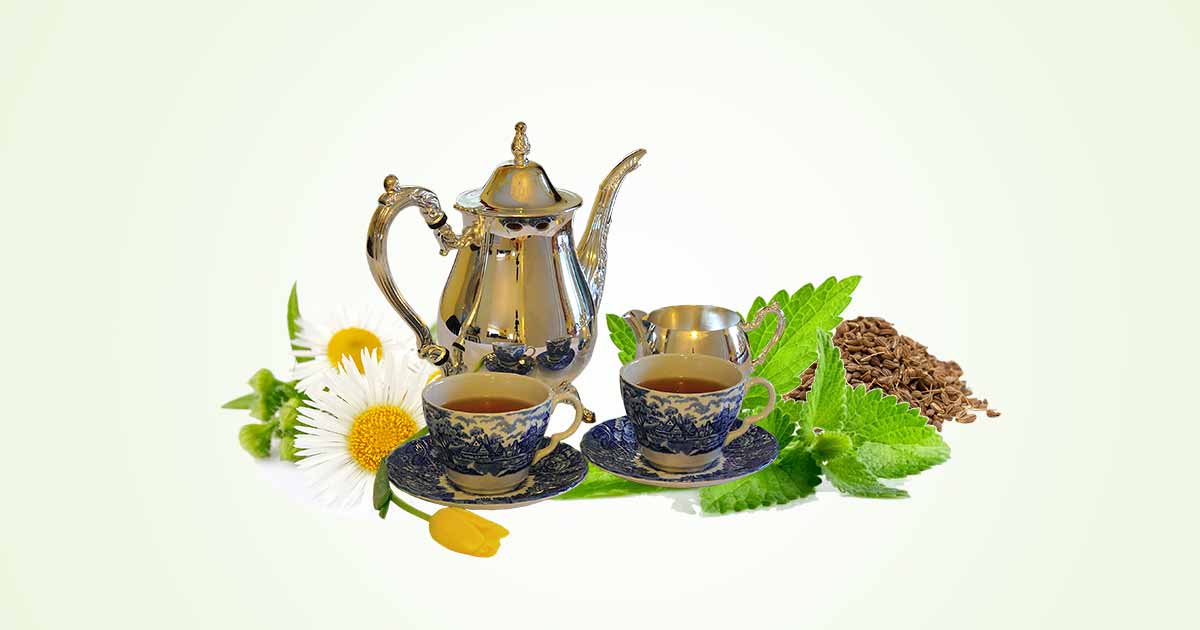Black cardamom (Amomum subulatum), also called ‘Bari Ilaichi’ or ‘Heel kalan’ is one of the two major types of cardamon alongside true or green cardamom. The herbaceous perennial shrub belongs to the ginger family, Zingiberaceae. It has a tarry smell and a coarse, strong pine flavour. It is one of the oldest herbs ever grown.
The plant is native to the Eastern Himalayas in the in Sikkim, India, and Nepal. But it is now found in India, Nepal, Bhutan, and China.
Black Cardamom is also known as “Black gold” or “Queen of spices”. Black Cardamom is also called hill cardamom, big cardamom, Winged Cardamom, greater cardamom, Indian cardamom, Nepal cardamom, or brown cardamom.
The botanical name, Amomum subulatum comes from the Greek word momum which means ‘unblemished’ or ‘faultless’ and the Latin word subula meaning “awl”, in reference to the awl-shaped and pointed leaves.
Black cardamom is a tall evergreen plant, which can reach up to 1.5-3 meters height. It has a reddish stem, and abundant glossy, evergreen, slim leaves. The flowers are yellow or white, and forms at the base of the dull reddish-brown spreading rhizomes. The rhizomes produce the fruit pod that contains cardamon seeds.
The pods (fruits)or capsule are initially light-green, and become large, hairy, brown to black, with rough and wrinkled exterior skin. The capsule can holds up to 40 to 50 purple, dark-brown or red-brown seeds in a sugary pulp. The seeds are surrounded by fragrant, pungent oil with camphor-like aroma. Black cardamom has a smoky flavor and aroma.
Medicinally, black cardamon has anti-inflammatory, anti-ulcer, cardioprotective, antioxidant, anticancer, and anti-microbial activities.
It is used in herbal medicine to treat gastrointestinal issues, vomiting, heartburn, respiratory tuberculosis, irritation of eyelids, rectal infection, looseness of the bowels, throat issues, respiratory issues. Residues from the charred leaves are used with mustard oil for treating sexually transmitted infections.
Seeds are also used as an antidote against snake and scorpion venom. It is a cardiac, stomachic and carminative stimulant.
In cooking, it can go with cloves, cinnamon, and pepper in garam masala and tandoori-style spice mixtures. It is also used in confectionery, stew, pickles.
Cardamon is used in food preparation, pharmaceutical, cosmetic, and perfume industries.
Black Cardamom vs. Green Cardamom
Both green cardamom, or true cardamom (Elettaria cardamomum) and black cardamom, belongs to the ginger family (Zingiberaceae). Both of them have similar nutritional and medicinal constituent and uses. However, there are some differences.
- Green cardamom is harvested early as a small, green seeds and pods, while black cardamoms are larger, has dark brown pods, and are harvested at full maturity.
- Green cardamom has a sweet yet pungent flavors, while black cardamom has a smoky, minty flavor.
- The whole pods and the seeds are used in green cardamom, while the whole seed pods of black cardamom are roasted, and only the seeds used.
- Green cardamom is also more expensive.
Composition
Flavonoids, tannins, triterpenoids, amino acids, steroids, phlobatinin, cardiac glycosides, anthocyanins, alkaloids, fixed oil and fats, are obtained from black cardamon.
There are essential oils mainly 1,8-cineole, and α-terpinyl acetate, and others like limonene, sabinene, β-pinene, α-terpineol, p-cymene, pinenes, terpinene-4-ol, α- and β-terpineol, allo-aromadendrene, myrcene, γ-terpinene, nerolidol. 1,8-cineole, and α-terpinyl acetate give the pungent and pleasant aroma to cardamom.
The seed contains essential oil, flavonoids, carbohydrates and fats, and glycosides such as subulin,
petunidin-3,5-diglucoside.
Health Benefits of Black Cardamom
Antimicrobial activity: Extract of large cardamon inhibits bacteria such as Staphylococcus aureus, Escherichia coli, Pseudomonas aeruginosa, Bacillus cereus, and fungi like Candida albicans, Aspergillus flavus and Saccharomyces cerevisiae.
This may be due to antimicrobial compounds such as tannins, alkaloids, flavonoids, and essential oils such as α-terpineol, terpine-4-ol, pinocarvone, nerolidol, and pinocarveol.
Dental health: Black cardamon also inhibits two microorganisms that cause dental caries – Streptococcus mutans and S. aureus. Streptococcus mutans colonize the dental surface and damage the hard tooth structure.
Cardiovascular health: The plant contains tannins, flavonoids, and saponins. In a study by Abdul Halim Serafi et al., Amomum subulatum lowered the mean arterial pressure in normotensive and spontaneously hypertensive rats. It decreased the blood pressure and heart rate.
It also reduces atherogenic lipids and increased plasma fibrinolytic activity and serum total antioxidant status in patients with ischemic heart disease (Surendra Kumar Verma et al.)
Antidiabetic effect: Studies by Vavaiya, P. Amit, reported that Amomum subulatum seed extract increased serum insulin levels, and reduced hyperglycemia in fructose fed metabolic syndrome in rat. It also restored the β-cells.
Also, the seed and rind extract of Amomum subulatum showed in vitro α-amylase and α-glucosidase inhibition activity (Syed Ammar Hussain et al.). This could be because of the flavonoids, saponins, and tannins constituents.
Anti-inflammatory activity: The fruit extract reduced the paw in carrageenan and formalin induced mice paw edema models, respectively (Sudarsanan Drishya et al.). Treatment with black cardamon reduced vascular permeability, serum proinflammatory cytokine levels (TNF-α, IL-1β, and IL-6), cyclooxygenase-2 (COX-2) and inducible nitric oxide synthase (iNOS).
Hence, black cardamon can become a potential option for managing inflammatory conditions like rheumatic diseases.
Antioxidant effect: Cardamom has essential oils such as 1, 8 cineole, α-terpineol, terpinen-4-ol, pinene, β-myrcene, terpinyl acetate, and linalool that have antioxidant activities. These compounds prevent lipid peroxidation and free radical formation that cause diseases like cancer, cardiovascular diseases.
Gastric antiulcerogenic effect: Different extracts of black cardamon inhibit gastric lesions induced by aspirin, ethanol and pylorus ligature, by mechanisms such as an increase in gastric wall mucus, or a decrease in gastric motility (M A Jafri et al. 2001).
Anticancer effect: Amomum subulatum seeds contain alkaloids, tannin, saponin, phlobatinin, and cardic glycoside. It also has antioxidant capacity, and can scavenge reactive oxygen species (ROS) preventing diseases like cancer.
The seed also contains phytocompounds which target TP53 in cancer.
Hepatoprotective activity: A. subulatum seeds showed hepatoprotective activity against ethanol-induced liver damage in rats. It prevented functional, physical (increased liver weight and volume) changes.
Also, other changes like biochemical (serum glutamate oxaloacetic transaminase and glutamate pyruvic transaminase, alkaline phosphatase, total and direct bilirubin, total cholesterol, triglyceride)and histological changes (damage to hepatocytes) were inhibited.
This may be because of the antioxidant property and constituents such as flavonoids, terpenoids, glycosides and volatile oils.
References
- https://www.thespicetrader.co.nz/products-overview/whole-and-ground-spices/black-cardamom-whole/#:~:text=Botanical%20name%20Amomum%20subulatum%20%E2%96%AA,contain%20about%2030%2D50%20seeds.
- https://plants.ces.ncsu.edu/plants/amomum-subulatum/
- https://scialert.net/fulltext/?doi=pjbs.2022.358.368
- https://pubmed.ncbi.nlm.nih.gov/33399519/
- https://www.semanticscholar.org/paper/Anti-Diabetic-Activity-of-A-momum-Subulatum-Roxb-.-Vavaiya-Amit/d78f6f261ee721968a02a0ea76faed8c0b71f952
- https://journalcra.com/sites/default/files/issue-pdf/40962.pdf
- https://www.mattioli1885journals.com/index.php/progressinnutrition/article/download/6196/7374/27649
- https://www.ncbi.nlm.nih.gov/pmc/articles/PMC10189520/
- https://www.researchgate.net/publication/38101658_Hepatoprotective_activity_of_Amomum_subulatum_Roxb_against_ethanol-induced_liver_damage
- https://www.ijert.org/research/determination-of-volatile-components-in-black-cardamom-with-gas-chromatography-mass-spectrometry-and-chemometric-resolution-IJERTV3IS110914.pdf

